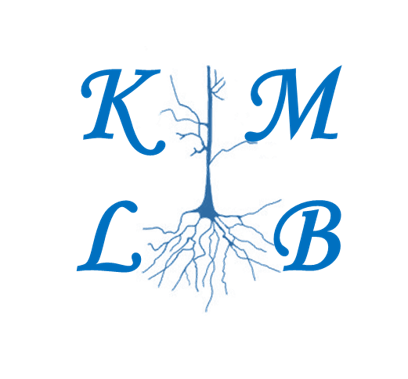 A putative eyeblink conditioning circuit based on experimental findings and gross anatomy of the cerebellum and the brain stem. The CS pathway consists of excitatory (+) mossy fiber (MF) projections from the pontine nucleus (PN) to the interpositus nucleus (Int) and to the cerebellar cortex. In the cortex, the mossy fibers form synapses with granule cells (GR) that in turn send excitatory parallel fibers to the Purkinje cells (PC). The Purkinje cells are the exclusive output neurons from the cortex and they send inhibitory (-) fibers to deep nuclei such as the interpositus. The US pathway consists of excitatory climbing fiber (CF) projections from the inferior olive (IO) to the interpositus and to the Purkinje cells in the cerebellar cortex. Within the cerebellar cortex, Golgi (GO), stellate (ST) and basket (BA) cells exert inhibitory actions on their respective target neurons. The efferent CR pathway projects from the interpositus nucleus to the red nucleus (RN) and via the descending rubral pathway to act ultimately on the eyeblink reflex path. Additional abbreviations: V Coch N, ventral cochlear nucleus; N V (sp), spinal fifth cranial nucleus; N VI, sixth cranial nucleus; N VII, seventh cranial nucleus. From Kim JJ and Thompson RF (1997). Cerebellar circuits and synaptic mechanisms involved in classical eyeblink conditioning. Trends in Neurosciences 20: 177-181.
A putative eyeblink conditioning circuit based on experimental findings and gross anatomy of the cerebellum and the brain stem. The CS pathway consists of excitatory (+) mossy fiber (MF) projections from the pontine nucleus (PN) to the interpositus nucleus (Int) and to the cerebellar cortex. In the cortex, the mossy fibers form synapses with granule cells (GR) that in turn send excitatory parallel fibers to the Purkinje cells (PC). The Purkinje cells are the exclusive output neurons from the cortex and they send inhibitory (-) fibers to deep nuclei such as the interpositus. The US pathway consists of excitatory climbing fiber (CF) projections from the inferior olive (IO) to the interpositus and to the Purkinje cells in the cerebellar cortex. Within the cerebellar cortex, Golgi (GO), stellate (ST) and basket (BA) cells exert inhibitory actions on their respective target neurons. The efferent CR pathway projects from the interpositus nucleus to the red nucleus (RN) and via the descending rubral pathway to act ultimately on the eyeblink reflex path. Additional abbreviations: V Coch N, ventral cochlear nucleus; N V (sp), spinal fifth cranial nucleus; N VI, sixth cranial nucleus; N VII, seventh cranial nucleus. From Kim JJ and Thompson RF (1997). Cerebellar circuits and synaptic mechanisms involved in classical eyeblink conditioning. Trends in Neurosciences 20: 177-181.

